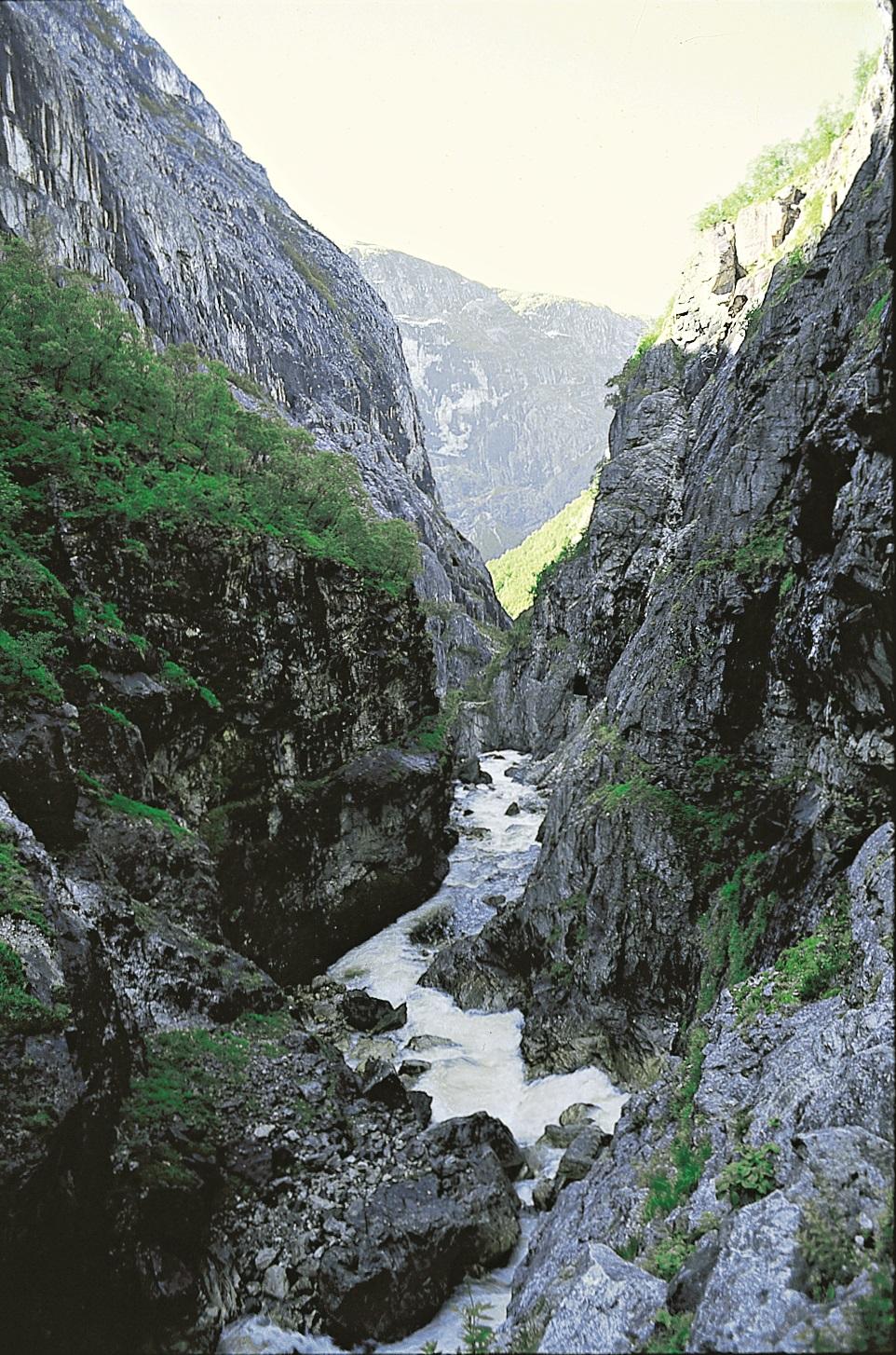The rivers in Brekkedalen and Jordalen valleys give reason for suspicion: First, they run straight southward toward Voss, the apparent travel destination in the distance, but then the water turns sharply towards the north-east as it meets Nærøydalen valley. Valley shelves on both sides of Nærøydalen also show the remains of an old river valley that went toward Voss.
Just how did this theft occur? Also here, it is the glaciers that give the explanation: The glaciers were more effective along the old "Sognaelva river" than in the valleys that went toward Voss. After many ice ages, the carving resulted in an extension of Sognefjord, not only toward the east, but also into the side fjords. The glacier carved away in what is now Nærøy Fjord and Nærøy valley, so that the water that ran toward Voss was absorbed, or stolen. The valleys that originally went southwards toward Voss became hanging valleys of Nærøy valley, and the water found an easier path toward the north-east. The "water thief" reached almost all the way in to Oppheimsvatnet Lake, but not further. The end of the valley by Stalheimsfossen waterfall is like a dramatic stairway in the landscape. The steps mark the transition from the inner part of Nærøydalen, where the ice carved deep and relentlessly, to the more open valley above the falls, where the glacier accomplished little in comparison. When the rivers once ran toward Voss, they created a natural pattern, like a tree with branches, as most water systems do. After they were absorbed by Sognefjord and Nærøy Fjord the valleys created a barbed pattern, "agnor", and therefore they are now called "agnor" - or barbed - valleys.


